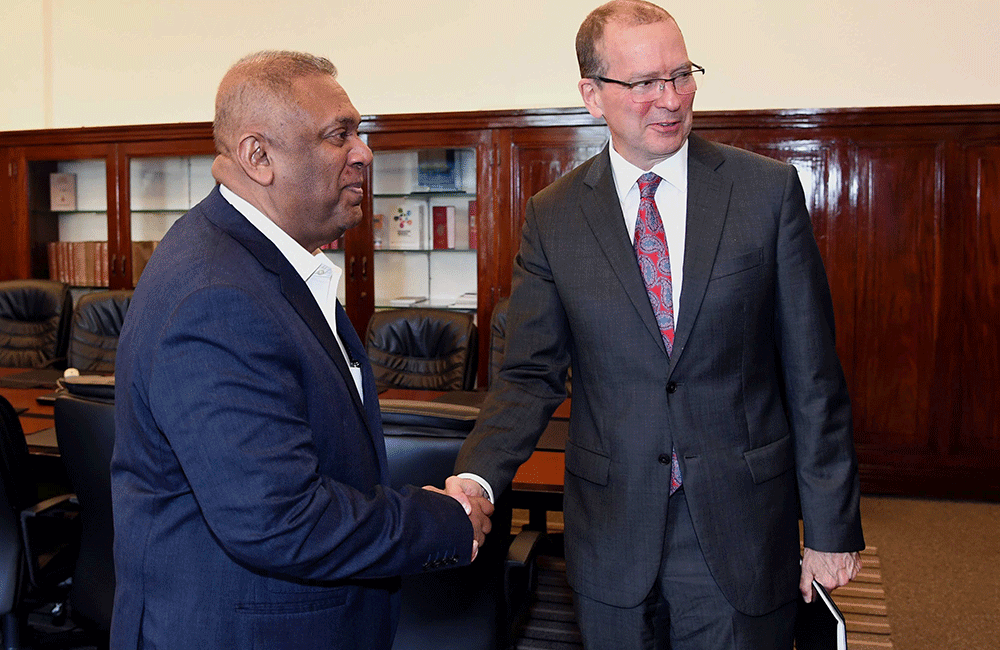The sixty-eighth Annual Report of the Monetary Board of the Central Bank of Sri Lanka (CBSL) was presented to the Minister of Finance and Mass Media, Mangala Samaraweera by the Governor of the Central Bank of Sri Lanka, Dr. Indrajit Coomaraswamy yesterday.
The reports highlights that the stabilisation policy measures taken by the Central Bank and the government in the past two years resulted in a number of notable improvements, although real economic growth faltered and recorded a multi year low during 2017.
The monetary policy stance of the Central Bank that was gradually tightened since end 2015, was tightened further in March 2017 by raising the key policy interest rates of the Central Bank by 25 basis points. “Increasing market interest rates were allowed to stabilise at high levels,” it said.
In the external current account, although earnings from exports increased to the highest levels recorded, the increase in imports, mainly arising from drought related imports of petroleum and rice as well as increased importation of gold, caused a wider trade deficit.
Although inflows on account of services exports including tourism, and workers’ remittances continued to cushion the impact of the widened trade deficit to some extent, the current account recorded a deficit of 2.6 per cent of GDP during the year.
The Sri Lankan rupee depreciated against the US dollar by 2.0 per cent during the year, while the real effective exchange rate indices also depreciated, raising the competitiveness of the currency.
“Such a fairly-valued currency in real terms, is expected to enable a gradual adjustment of the current account deficit of the BOP in the period ahead,” the report says.
Adverse weather conditions and their spillover effects continued to affect real economic activity, and the economy surprised to the downside by recording a growth of 3.1 per cent in real terms.
This was significantly below projections of the Sri Lankan authorities as well as international agencies, the Central Bank said.
In spite of the low real GDP growth, the economy created sufficient employment opportunities that induced a further reduction in the unemployment rate to 4.2 per cent during the year, the report added.
Source : Ada Derana

Leave your comments
Login to post a comment
Post comment as a guest